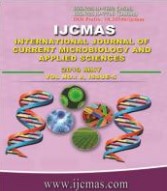


 National Academy of Agricultural Sciences (NAAS)
National Academy of Agricultural Sciences (NAAS)

|
PRINT ISSN : 2319-7692
Online ISSN : 2319-7706 Issues : 12 per year Publisher : Excellent Publishers Email : editorijcmas@gmail.com / submit@ijcmas.com Editor-in-chief: Dr.M.Prakash Index Copernicus ICV 2018: 95.39 NAAS RATING 2020: 5.38 |
Hydrological modelling is a powerful technique of hydrologic system investigation for both the research hydrologists and the practicing water resources engineers involved in the planning and development of integrated approach for management of water resources. In present study, the observed rainfall and runoff data of 2010, 2011, 2013 and 2014years were used as input data. In ANN, input data was divided in 70 per cent, 15 per cent and 15 per cent for training, testing and validation purpose, respectively. Rainfall-runoff models play an important role in water resource management planning and therefore, 70 numbers of different types of models with various degrees of complexity have been developed for this purpose. The output from ANN was tested with statistical parameters, viz. root mean square error (RMSE), mean absolute error (MAE), coefficient of determination (R2) and correlation coefficient (r). The rainfall-runoff relationship is one of the most complex hydrologic phenomena and it is based on tremendous spatial and temporal variability of watershed characteristics, precipitation patterns, etc. Therefore other models were not performing well. The ANN model 1-48-1 architecture was selected as the best. The comparisons between the measured and predicted values of runoff showed that the ANN model could be successfully applied and provide high accuracy and reliability for estimation of runoff from un-gauged watershed with rainfall as input parameter.
 |
 |
 |
 |
 |